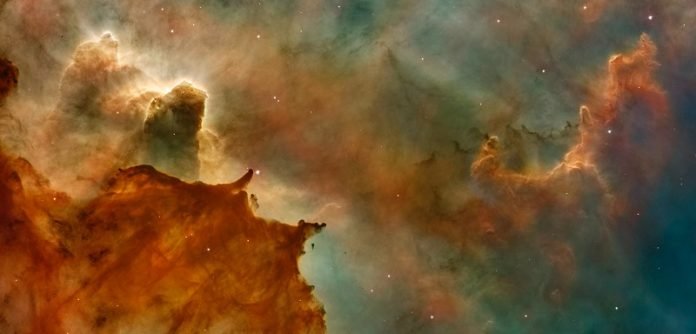
About 400,000 years after the universe was created began a period called “The Epoch of Reionization.”
During this time, the once hotter universe began to cool and matter clumped together, forming the first stars and galaxies.
As these stars and galaxies emerged, their energy heated the surrounding environment, reionizing some of the remaining hydrogen in the universe.
The universe’s reionization is well known, but determining how it happened has been tricky. To learn more, astronomers have peered beyond our Milky Way galaxy for clues.
In a new study, astronomers at the University of Iowa identified a source in a suite of galaxies called Lyman continuum galaxies that may hold clues about how the universe was reionized.
In the study, the Iowa astronomers identified a black hole, a million times as bright as our sun, that may have been similar to the sources that powered the universe’s reionization.
That black hole, the astronomers report from observations made in February 2021 with NASA’s flagship Chandra X-ray observatory, is powerful enough to punch channels in its respective galaxy, allowing ultraviolet photons to escape and be observed.
“The implication is that outflows from black holes may be important to enable escape of the ultraviolet radiation from galaxies that reionized the intergalactic medium,” says Phil Kaaret, professor and chair in the Department of Physics and Astronomy and the study’s corresponding author.
“We can’t yet see the sources that actually powered the universe’s reionization because they are too far away,” Kaaret says.
“We looked at a nearby galaxy with properties similar to the galaxies that formed in the early universe. One of the primary reasons that the James Webb Space Telescope was built was to try to see the galaxies hosting the sources that actually powered the universe’s reionization.”
The paper is titled, “Rapid turn-on of a luminous X-ray source in the candidate Lyman continuum emitting galaxy Tol 0440-381.”
It was published in the journal Monthly Notices of the Royal Astronomical Society.
Jesse Bluem, a graduate research assistant at Iowa, and Andrea Prestwich, with the Harvard-Smithsonian Center for Astrophysics, are co-authors.
Written by Richard C. Lewis.



